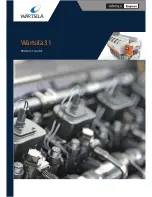
8
Users Manual
8
Service advice
If you are not satisfied with the performance of the engine, and
other karts are faster down the straight or out of the bends, it does
not necessarily mean that your engine is no good. It could mean
that it needs basic adjustment of the carburettor or ignition sys-
tem. Of course, the piston or the piston rings could be worn out,
the radial sealing rings could be leaking or a bearing on the crank-
shaft could be worn out. But more likely, the difference between a
good engine and a tired one is found either in the carburettor or in
the ignition system.
So here are some hints on how to check and adjust the carburet-
tor and the ignition system.
The carburettor used on the Raket 85 engine is a membrane car-
burettor with a built-in fuel pump. It is made by Tillotson in Ireland,
and has the designation HS. If we follow the gasoline through the
carburettor it is easy to explain the function of the carburettor. The
carburettor has two covers, one is made of steel and the other is
made in aluminum casting. Under the aluminum cover is found
a rubber membrane, called the pump membrane, and a gasket,
on each side of the membrane is a small chamber. One of these
is directly connected to the crankcase with a channel. When the
pressure in the crankcase varies, it will move the pump mem-
brane up and down. On the other side of the membrane, in the
other chamber, is the fuel. When the membrane moves, it pumps
gasoline in and out of the chamber. Two small valves are punched
out from the same piece of rubber as the pump membrane, and
they now act so that fuel is sucked from the fuel tank and pumped
into the main carburettor. The pump shall give a pressure of 0,5
kp/cm2. It is very easy to check if the pump is working. Unscrew
the sparkplug to make it easier to rotate the engine. Check that
the fuel hose is connected correctly and that the carburettor is
mounted correctly on the engine. Check all gaskets, especially
the gasket between carburettor and the engine so that there is no
leaking, or is blocking the channel. Then push down carefully the
main membrane with a small screwdriver through the little hole in
the punched steel cover of the carburettor. This will open the fuel
inlet needle valve.
Now rotate the engine, and check through the transparent fuel
hose if fuel is flowing from the tank to the carburettor. If it is not,
push down the main membrane, loosen the fuel hose at the tank
end, and blow carefully into the free end of the hose. You shall
be able to blow slowly through the hose and the carburettor. If
you can’t, take away the aluminum cover and check the small
fuel filter (no 43 on the spare part list) – it could be blocked. After
that, check the pump membrane – it can be broken. That can be






































